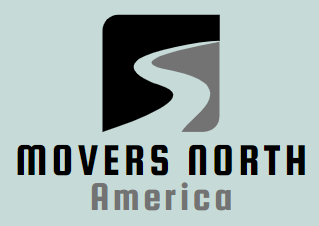So now that you’ve gotten that relocation across the country that you always hoped for/feared about, it’s time to decide what you’re going to do with your old car. Let’s examine the problem as logically as we can, and we’ll take you through a step-by-step process to help you make up your mind. The first decision that you’re going to have to make is whether to keep it or get rid of it. We’ll examine the ways that you can get rid of it first.
Getting Rid of Your Car
Donating Your Car to Charity
While you always have the option of simply driving down the scrap yard, we would like to advise you to consider donating it to any of the variety of charities which are willing to give you a tax deduction receipt for it. A little bit of research on the Internet will easily give you a number of these services, but we’d like to warn you to exercise some caution in your choice.
Some of the charities are worthier than others. If you’re interested in our recommendations, please take a look at our list of charities located here. One such program, called Car Heaven rewards you and makes it easy to retire your old car for good. Each donor is offered a free tow (valued at $200) and a choice of receiving a minimum $60 charitable tax receipt or a $1000 incentive coupon towards a brand new GM vehicle. There are also exciting contests where donors to the Car Heaven Program can win trips or a brand new GM vehicle.
Donated cars are picked up and processed by a local member of the Ontario Automotive Recyclers Association (OARA) in communities throughout Ontario. Their members are committed to the environmentally friendly processing of cars and their parts – including oil, fluids, and tires.
Cars that are eleven years old or newer are bid on by members of OARA. As well, exotic or low mileage cars are also bid upon. Cars that are 12 years and older have a set value of $60. Your tax receipt will be a minimum of $60 or the bid value of the car, whichever is greater.
Selling Your Car Privately
If you’ve ever sold a car before, you already know that it can be a fairly lengthy and time-consuming process. Although the cheapest method is simply putting some for-sale signs in its window and hoping that someone who sees it will become interested, this is generally the least effective method. While you could also choose to put an ad in one of your local newspapers, more people are now shifting to using used-car web sites on the Internet. The main advantage of this is the ability to search quickly for the exact car that you desire. Most used-car web sites will allow you to search by region, make or model, year of manufacture, and price range. One of the more established web sites is www.autotrader.ca.
Keeping Your Car
Moving Your Car
If you just can’t bear to be parted from your baby, or if it’s not financially viable for you to sell your car at your old home and buy another at your new home, then you’re going to have to decide on the best means of moving your vehicle. If you’re simply moving your car within North America, then your cheapest solution will be to drive your car yourself. Canada and America both have excellent highway systems, and the trip may even give you a chance to see portions of your country that you previously hadn’t. Obviously, before you go you should take your vehicle into a mechanic to have it serviced to ensure that it’s capable of the journey. Given all of the other pressures that will be put upon you during your move, you definitely do not want to have to worry about whether your car is able to make it to your new location. If your vehicle is more than 10 or so years old, you should carefully consider whether it is in good enough mechanical condition to complete the journey. However, if you don’t want to move your auto yourself, but you still want to keep it, then it’s time to consider an auto mover.
Auto Movers
There are a variety of reputable auto movers within North America. If you want to have your vehicle moved across the province, across the state, or even across the country, then you’re probably going to need the help of an auto mover. Auto moving companies will arrange to move your vehicle in one of two ways. First, almost every auto mover is willing to transport your car from door to door. That is, they will take your car up at your original home and move your auto to whatever your new location will be. Second, some auto movers also have a hub to hub service, where you have to take your vehicle into the vehicle mover’s central location, and then pick it up from another ‘ hub’ location near your future home. Moving your vehicle this way is always more cost effective.
Our list of reputable auto movers.
Vehicle Transportation
No matter which method of moving your vehicle you choose, your car will probably be transported on an open car carrier, which is the large open car moving truck that you’ve probably seen before while driving on the highway. Many automobile manufacturers will use them as a method of moving their vehicles from a manufacturing plant to their dealer locations. This method is good enough for moving almost every type of vehicle, but if you really want to protect your car, you should probably have it shipped in a closed carrier. Closed carriers are exactly what they sound like – a container for moving autos which is completely enclosed. This means that your car will have no chance of being damaged by a random piece of gravel while your vehicle is moved. If you have a classic car collection, and are especially worried about it, you will probably want to pay the extra cost for this service to move your auto.
The cost for moving a vehicle from coast-to-coast is roughly the same in both Canada and the United States of America. It should vary between $800 and $1200, and you can usually save yourself between $50 and $100 on each end of the trip if you pick up and deliver the car yourself to one of the auto moving hubs. In Canada it is more common for vehicles travel by rail car rather then a car transporter, owing to the fact that most major Canadian cities lie in a line close to the American border.
Our list of reputable auto movers.

